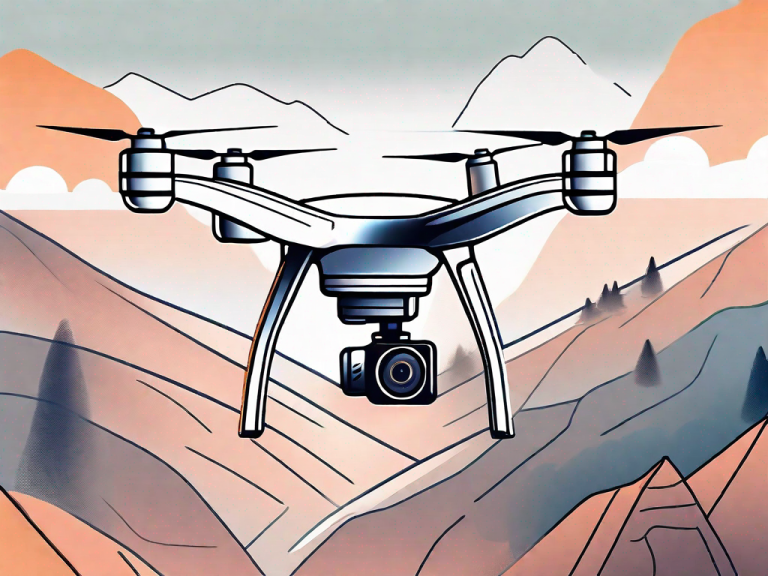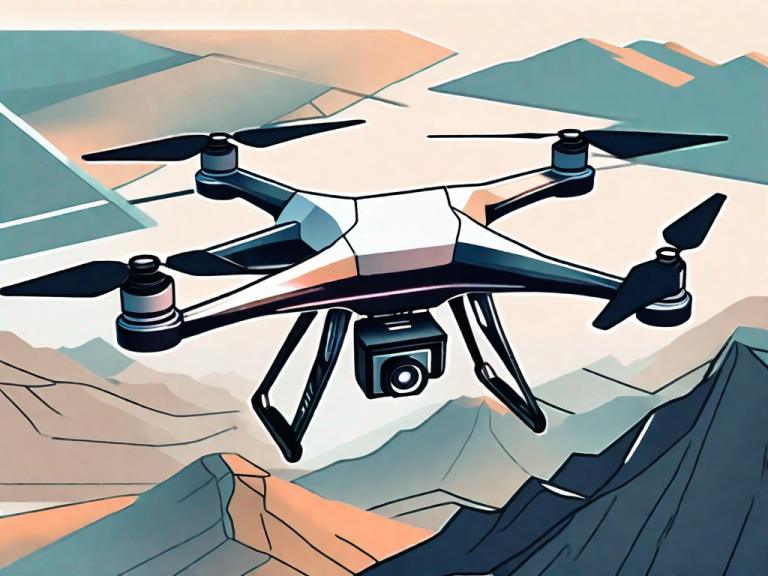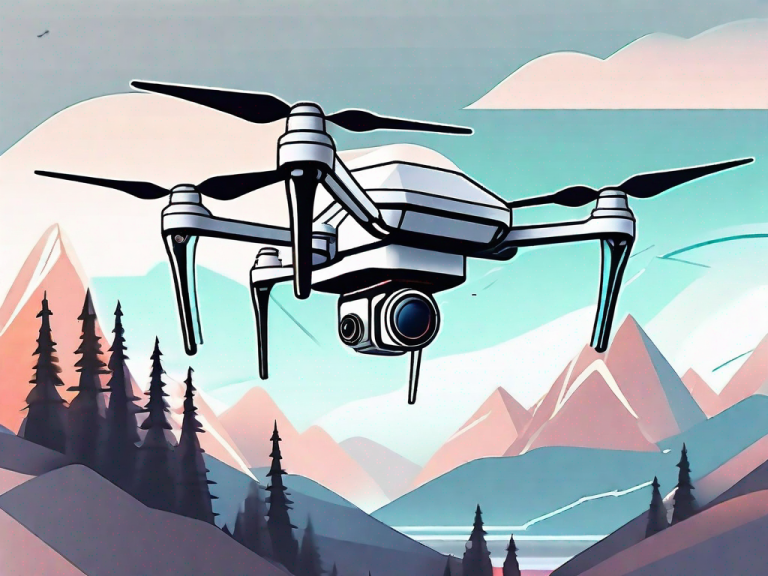Law enforcement agencies are increasingly turning to drones as a valuable tool in their efforts to maintain public safety. These unmanned aerial vehicles (UAVs) offer a wide range of benefits, from enhancing surveillance and situational awareness, to aiding in crime prevention and investigation efforts. In this comprehensive guide, we will explore the role of drones in modern policing and provide a detailed review of the top drones used by police departments. We will also discuss key features to consider when choosing a drone for law enforcement purposes, and highlight the importance of durability and robustness in these specialized UAVs.
Why Law Enforcement Agencies Should Consider Drones
Law enforcement agencies across the globe are recognizing the immense advantages that drones bring to their operations. Drones offer an unprecedented aerial perspective, allowing law enforcement officers to quickly and efficiently survey large areas, gather vital intelligence, and respond to emergencies in a timely manner. With their ability to fly at different altitudes, drones provide a distinct advantage over traditional surveillance methods, particularly in hard-to-reach or dangerous areas. Moreover, drones can be equipped with state-of-the-art technology, such as thermal imaging cameras and high-resolution video capabilities, enabling law enforcement agencies to gather evidence and monitor critical situations with unparalleled accuracy and efficiency.
In addition to their surveillance capabilities, drones can also be used for search and rescue operations. Law enforcement agencies can deploy drones to locate missing persons or stranded individuals in remote or inaccessible areas. The aerial perspective provided by drones allows for a wider search radius and faster response times, potentially saving lives in critical situations. Furthermore, drones can be equipped with thermal sensors and infrared cameras, enabling them to detect heat signatures and locate individuals even in low-light or obscured conditions. This makes drones an invaluable tool for law enforcement agencies in their efforts to protect and serve their communities.
The Role of Drones in Modern Policing
Drones have revolutionized modern policing by providing law enforcement agencies with an additional layer of capabilities. These UAVs can be deployed for a wide range of tasks, including search and rescue operations, traffic management, crowd monitoring, and perimeter surveillance. By utilizing drones, law enforcement can extend their reach and enhance their operational efficiency, freeing up valuable resources that can be allocated to other pressing matters. Drones also play a crucial role in improving officer safety, as they can be used to assess potentially dangerous situations before sending in personnel. This ability to gather real-time information from a safe distance empowers law enforcement officers to make well-informed decisions and mitigate risks effectively.
In addition to their operational benefits, drones have also proven to be cost-effective tools for law enforcement agencies. Compared to traditional methods of aerial surveillance, such as helicopters or fixed-wing aircraft, drones are significantly more affordable to acquire and maintain. This cost-effectiveness allows law enforcement agencies to allocate their budgets more efficiently and invest in other areas of policing.
Furthermore, drones have the potential to enhance community engagement and public trust in law enforcement. By utilizing drones for tasks such as community events monitoring or disaster response, law enforcement agencies can demonstrate their commitment to public safety and transparency. The visible presence of drones in these situations can also serve as a deterrent to potential criminal activities, contributing to the overall security of the community.
How Drones Enhance Surveillance and Situational Awareness in Law Enforcement
One of the primary benefits of using drones in law enforcement is their ability to augment surveillance capabilities and provide superior situational awareness. Equipped with advanced cameras and sensors, drones can capture high-resolution images and videos, allowing law enforcement agencies to closely monitor public spaces, gather evidence, and track suspects. Drones can easily navigate complex terrains, fly over obstacles, and cover vast areas in a short amount of time, providing law enforcement officers with a comprehensive view of the scene. By utilizing drone technology, law enforcement agencies can effectively combat criminal activities, identify potential threats, and prevent incidents before they escalate.
In addition to their surveillance capabilities, drones in law enforcement can also be equipped with thermal imaging cameras. These cameras can detect heat signatures, making it easier for law enforcement officers to locate individuals, even in low-light or obscured conditions. This technology is particularly useful in search and rescue operations, as drones can quickly scan large areas and identify individuals who may be in distress.
Furthermore, drones can be used for crowd monitoring and control during large-scale events or protests. By deploying drones overhead, law enforcement agencies can monitor crowd movements, identify potential safety risks, and respond quickly to any disturbances. This proactive approach to crowd management can help maintain public safety and prevent the escalation of conflicts.
A Comprehensive Review of the Top Drones Used by Police Departments
When it comes to choosing the best drone for law enforcement purposes, several factors need to be considered. Police departments require drones that are reliable, durable, and equipped with advanced features to meet the unique demands of their operations. Let’s take a closer look at some of the top drones used by police departments:
1. Drone X: This rugged and versatile drone is equipped with a powerful camera that provides high-resolution imagery, even in low-light conditions. Its long flight time and advanced flight control system make it an excellent choice for law enforcement agencies.
2. Guardian Drone: Designed specifically for law enforcement, this drone boasts an array of features, including live video streaming, object detection, and automatic tracking. It is highly maneuverable and can be deployed in various scenarios.
3. SPF Drone: Known for its exceptional durability and long-range capabilities, the SPF drone is an ideal choice for law enforcement agencies operating in challenging environments. It is equipped with a range of sensors and can endure harsh weather conditions.
These are just a few examples of the top drones used by police departments. Each drone offers unique features that cater to specific law enforcement needs, and choosing the best option depends on factors such as budget, operational requirements, and training capabilities.
4. Enforcer Drone: The Enforcer drone is specifically designed for tactical operations and crowd control. It is equipped with a loudspeaker system that allows law enforcement officers to communicate with crowds from a safe distance. Additionally, it has a non-lethal deterrent system that can disperse crowds without causing harm.
5. Stealth Drone: The Stealth drone is specially designed for covert surveillance and intelligence gathering. It is equipped with advanced stealth technology that makes it virtually undetectable by radar and thermal imaging. This drone is ideal for gathering critical information without alerting suspects.
Key Features to Look for When Choosing a Drone for Law Enforcement Purposes
When selecting a drone for law enforcement purposes, there are several key features that agencies should consider:
1. Camera Quality: High-resolution cameras with advanced imaging capabilities are crucial for effective surveillance and evidence gathering.
2. Flight Time and Range: Longer flight times and extended operational ranges enable law enforcement agencies to cover larger areas and conduct more comprehensive surveillance.
3. Stability and Maneuverability: Drones with stable flight control systems and agile maneuvering capabilities are essential for capturing clear and steady footage, especially during high-speed pursuits or in challenging weather conditions.
4. Encryption and Data Security: Law enforcement agencies must prioritize drones that have robust encryption and data security measures in place. This ensures that sensitive information and footage captured during operations are protected from unauthorized access or tampering.
The Importance of Durability and Robustness in Law Enforcement Drones
In the context of law enforcement operations, drones need to withstand demanding conditions and operate reliably. To ensure their durability and robustness, law enforcement drones should be built using high-quality materials, have rugged designs, and offer superior protection against impacts and environmental factors. The ability to withstand harsh weather conditions, such as heavy rain or strong winds, is of utmost importance, as law enforcement agencies cannot afford to have their drone operations compromised due to weather-related issues.
Furthermore, law enforcement drones should also be equipped with advanced navigation systems and obstacle avoidance technology. This ensures that they can navigate through complex environments and avoid collisions with obstacles such as buildings, trees, or power lines. By incorporating these features, law enforcement drones can effectively carry out their missions without the risk of damage or loss of the drone.
In addition to durability and robustness, law enforcement drones should also prioritize data security and privacy. As drones are increasingly used for surveillance and data collection purposes, it is crucial that the information gathered by these drones is protected from unauthorized access or interception. Implementing encryption protocols and secure data storage systems can help safeguard sensitive information and maintain the trust of the public in law enforcement drone operations.
How Drone Technology Can Aid in Crime Prevention and Investigation Efforts
Drones are valuable tools in crime prevention and investigation efforts. Equipped with high-resolution cameras and advanced imaging technologies, drones can capture detailed footage of crime scenes, assist in evidence collection, and reconstruct incidents. Their ability to navigate tight spaces and inaccessible areas makes them particularly useful in locating suspects, searching for missing persons, or monitoring potentially dangerous situations safely. Additionally, drones can rapidly deploy to provide aerial support during emergencies or natural disasters, facilitating swift and effective response efforts.
Furthermore, drones can be equipped with thermal imaging cameras, allowing law enforcement agencies to detect heat signatures and identify hidden individuals or objects. This technology is especially beneficial in nighttime operations or situations where visibility is limited. By providing real-time aerial surveillance, drones can enhance situational awareness and help law enforcement make informed decisions.
Case Studies: Successful Deployments of Drones in Law Enforcement Operations
Throughout the world, law enforcement agencies have successfully deployed drones in a variety of operations. In one notable case, a police department used a drone equipped with thermal imaging technology to locate a missing person who had wandered into a dense forest. The drone’s aerial perspective enabled the officers to quickly spot the individual and guide ground units directly to the location, resulting in a successful rescue.
In another instance, a drone was deployed to monitor a large public gathering, ensuring the safety of participants and minimizing the risk of incidents. The drone’s real-time video feed allowed law enforcement officers to identify potential threats and respond quickly, effectively maintaining a secure environment.
These case studies highlight the versatility and effectiveness of drones in law enforcement operations, demonstrating the immense value they bring to public safety efforts.
In a recent case, a law enforcement agency used a drone to assist in a high-speed pursuit. The drone was able to follow the fleeing vehicle from above, providing real-time updates to the pursuing officers on the ground. This allowed the officers to maintain a safe distance and avoid dangerous maneuvers, ultimately leading to the successful apprehension of the suspect.
Additionally, drones have been utilized in search and rescue operations, particularly in difficult terrain or hazardous conditions. In one instance, a drone equipped with advanced imaging technology was deployed to locate a lost hiker in a mountainous area. The drone’s ability to cover large areas quickly and access hard-to-reach locations significantly expedited the search efforts, resulting in the safe recovery of the individual.
Training and Certification Requirements for Law Enforcement Drone Pilots
Operating drones for law enforcement purposes requires specialized training and certification. Law enforcement agencies must ensure that their drone pilots receive comprehensive and ongoing training to operate the UAVs safely and effectively. Pilots should be familiarized with the specific features and capabilities of the drones they operate, as well as the relevant aviation regulations and best practices for flight operations. Additionally, ongoing proficiency evaluations and recurrent training sessions should be conducted to ensure the continued competence of drone pilots.
Furthermore, law enforcement drone pilots must also be trained in the ethical and legal considerations of drone usage. They should understand the privacy rights of individuals and the limitations on surveillance activities. This training should emphasize the importance of using drones responsibly and within the boundaries of the law to maintain public trust and confidence in law enforcement operations. Additionally, drone pilots should be educated on the potential risks and hazards associated with operating drones in various environments, such as urban areas or during inclement weather conditions. This knowledge will enable them to make informed decisions and mitigate potential risks during their missions.
Legal Considerations and Privacy Issues Surrounding the Use of Drones in Policing
The use of drones in policing raises important legal and privacy considerations. Law enforcement agencies must comply with applicable laws and regulations governing drone operations to protect individuals’ rights and maintain public trust. In many jurisdictions, strict protocols govern when and how drones can be deployed, especially in sensitive areas or situations involving private property. Transparent communication with the public about the use of drones and the implementation of privacy protection measures, such as blurring faces or implementing data retention policies, are crucial to addressing privacy concerns and fostering public acceptance of law enforcement drone programs.
Overcoming Challenges: Integrating Drones into Existing Law Enforcement Infrastructure
Integrating drones into existing law enforcement infrastructure can pose various challenges. Agencies must develop standardized operating procedures, establish clear lines of command, and ensure seamless coordination between drone operators and other field personnel. Furthermore, the integration of drone data into existing information systems and the establishment of effective protocols for analysis and data sharing are vital steps in harnessing the full potential of drones in law enforcement operations. Collaboration with other relevant agencies, industry partners, and regulatory authorities can help overcome such challenges and pave the way for successful implementation.
Future Trends: Innovations and Advancements in Law Enforcement Drone Technology
As drone technology continues to evolve, law enforcement agencies can expect numerous innovations and advancements in the field. These may include improved battery life, enhanced autonomous capabilities, and increased payload capacities. Furthermore, advancements in artificial intelligence and machine learning algorithms can enable drones to autonomously analyze and identify potential threats or suspicious activities, reducing the need for human intervention. The integration of drones with other emerging technologies, such as facial recognition or biometric systems, holds great potential for enhancing law enforcement capabilities in the future.
Cost-Effectiveness Analysis: Assessing the Return on Investment for Law Enforcement Drones
While the initial investment in law enforcement drones may seem significant, a comprehensive cost-effectiveness analysis reveals their long-term benefits. Drones can significantly reduce the need for manpower and other expensive resources in various operations. By efficiently covering large areas and providing real-time situational awareness, drones enable law enforcement agencies to allocate their resources more effectively, optimize response times, and enhance overall operational efficiency, ultimately leading to cost savings in the long run.
Best Practices for Maintenance, Repair, and Upkeep of Law Enforcement Drones
Proper maintenance, repair, and upkeep are crucial for ensuring the longevity and optimal performance of law enforcement drones. Regular maintenance schedules should be established, including checks for any wear and tear, as well as software and firmware updates. Drone operators should undergo training related to routine maintenance, troubleshooting common issues, and conducting minor repairs. Additionally, it is essential to have a plan in place for the timely repair or replacement of damaged or malfunctioning drones to minimize downtime and ensure uninterrupted operational readiness.
In conclusion, drones have revolutionized law enforcement operations by providing unprecedented capabilities for surveillance, situational awareness, and crime prevention. Through the use of advanced camera systems, durable designs, and cutting-edge technology, law enforcement drones have become indispensable tools for police agencies worldwide. By carefully considering the key features, legal considerations, and privacy issues surrounding the use of drones, law enforcement agencies can ensure the safe and effective integration of UAVs into their existing infrastructure, bolstering public safety and enhancing their operational effectiveness.









